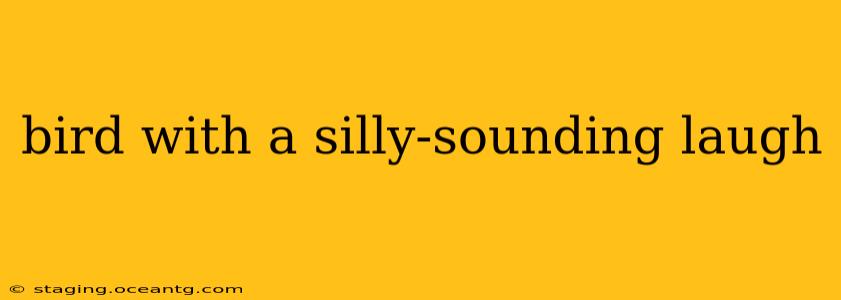The phrase "bird with a silly-sounding laugh" immediately conjures up one feathered friend: the kookaburra. Their distinctive, boisterous call – often described as a cackle, chuckle, or even maniacal laughter – is instantly recognizable and has cemented their place in popular culture. But what makes this laugh so unique, and what’s behind this seemingly comical vocalization? Let's delve into the world of the kookaburra and unravel the mystery of their mirthful calls.
What kind of bird laughs?
While many birds produce a wide array of sounds, the kookaburra is arguably the most famous for its laugh-like vocalization. Specifically, the Laughing Kookaburra ( Dacelo novaeguineae) is known for its infectious call. This large kingfisher, found primarily in Australia, produces a series of loud, barking calls that, when combined, sound remarkably like human laughter. It's important to note that other kookaburra species also have calls, but none quite as renowned for their "laugh."
Why do kookaburras laugh?
The kookaburra's "laugh" isn't a sign of amusement in the human sense. Instead, these calls serve crucial social and territorial functions.
-
Territorial Defense: The loud, echoing calls act as a warning to other kookaburras, proclaiming their presence and defending their territory. The more individuals join in a chorus of laughter, the stronger the territorial message.
-
Social Cohesion: Laughing is a significant part of kookaburra social bonding. Groups often engage in communal "laughing" sessions, strengthening their social bonds and maintaining group cohesion. This is particularly important during breeding season and when raising young.
-
Communication: The calls are not just a single sound; they vary in intensity and duration, carrying subtle information about the bird's emotional state and intentions. A longer, more intense "laugh" could signal aggression, while a shorter call might indicate a less assertive message.
What other birds have similar calls?
While no bird perfectly replicates the kookaburra's laugh, several species have calls that share some similarities:
-
Certain species of owls: Some owls possess calls that could be interpreted as a sort of hooting or chuckling sound. However, these are usually lower-pitched and less rhythmic than the kookaburra's laugh.
-
Various other kingfishers: While not as prominent as the kookaburra's laugh, other kingfisher species often produce sharp, repetitive calls that bear a slight resemblance in character, although not necessarily in sound.
-
Some types of parrots: Some parrots also possess calls that may incorporate a series of sharp, repetitive notes which, depending on the species and the context, might have a somewhat chuckle-like quality.
It's important to note that the perception of a sound as a "laugh" is subjective and relies on the human interpretation of a series of vocalizations.
How is the kookaburra's laugh produced?
The kookaburra's laugh is produced through the complex interaction of their syrinx, the bird's vocal organ located where the trachea splits into the lungs. The syrinx can produce a wide range of sounds due to its intricate structure and muscles, allowing them to create the distinct series of notes that make up their laugh.
Are there different types of kookaburra laughs?
While the basic structure of the call remains relatively consistent, there are subtle variations in the kookaburra's "laugh" based on factors such as the bird's age, social status, and context of the vocalization. These variations are often too subtle for the untrained ear to detect, but researchers can identify them through advanced sound analysis.
The next time you hear that unmistakable, hilarious sound echoing through the Australian bush, remember that it’s far more than just a silly laugh. It’s a complex form of communication, a testament to the social complexity of these remarkable birds.
